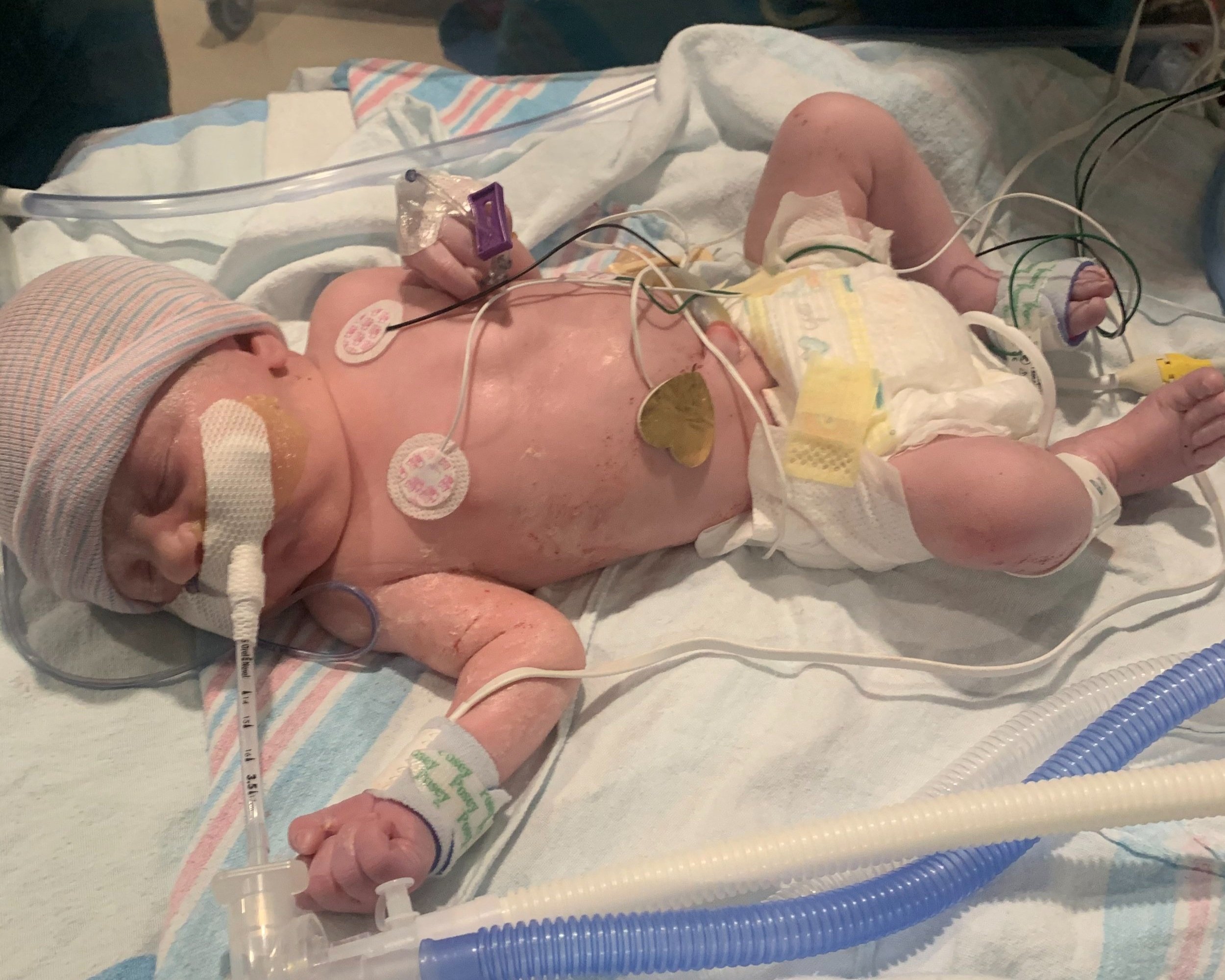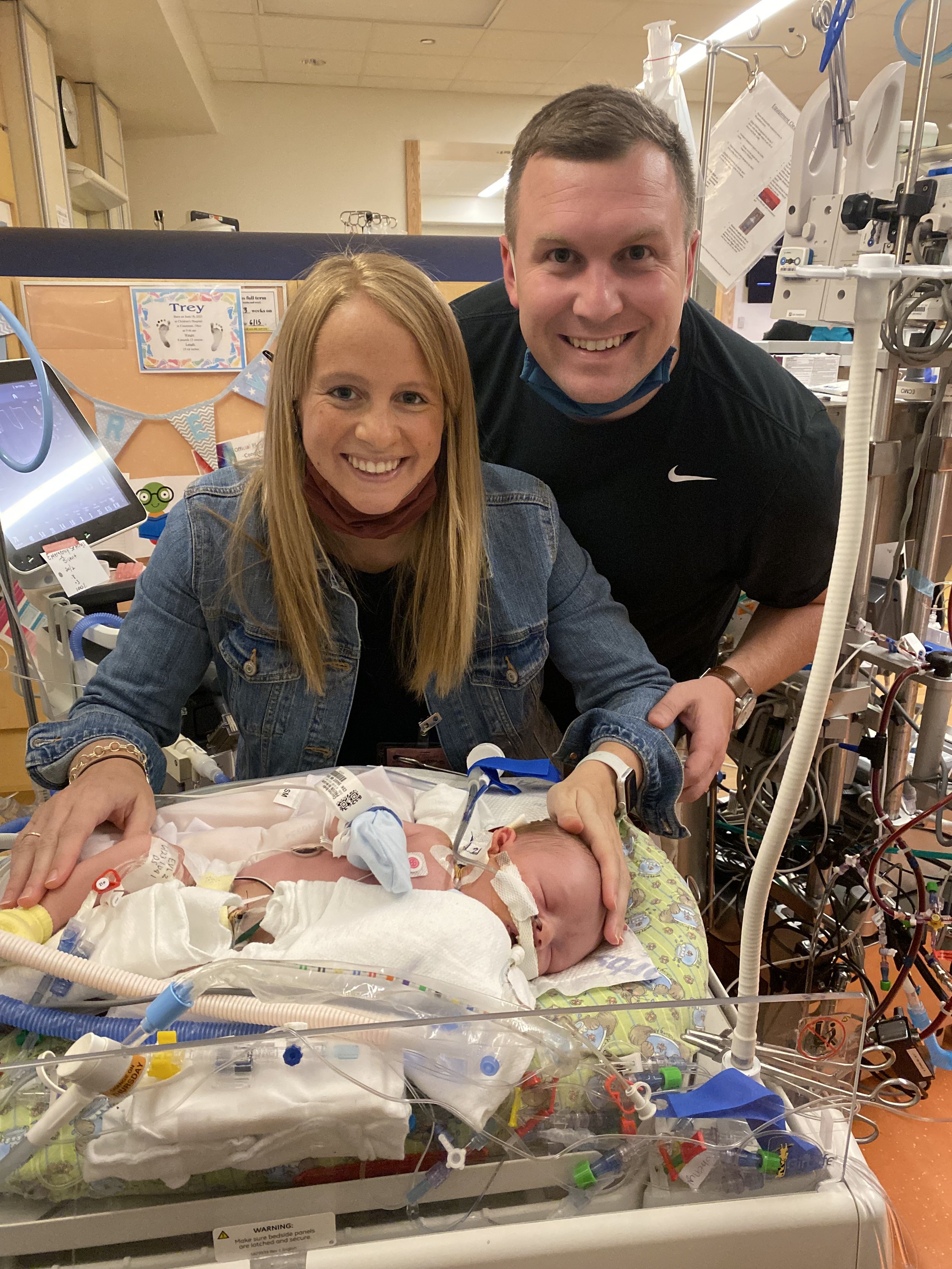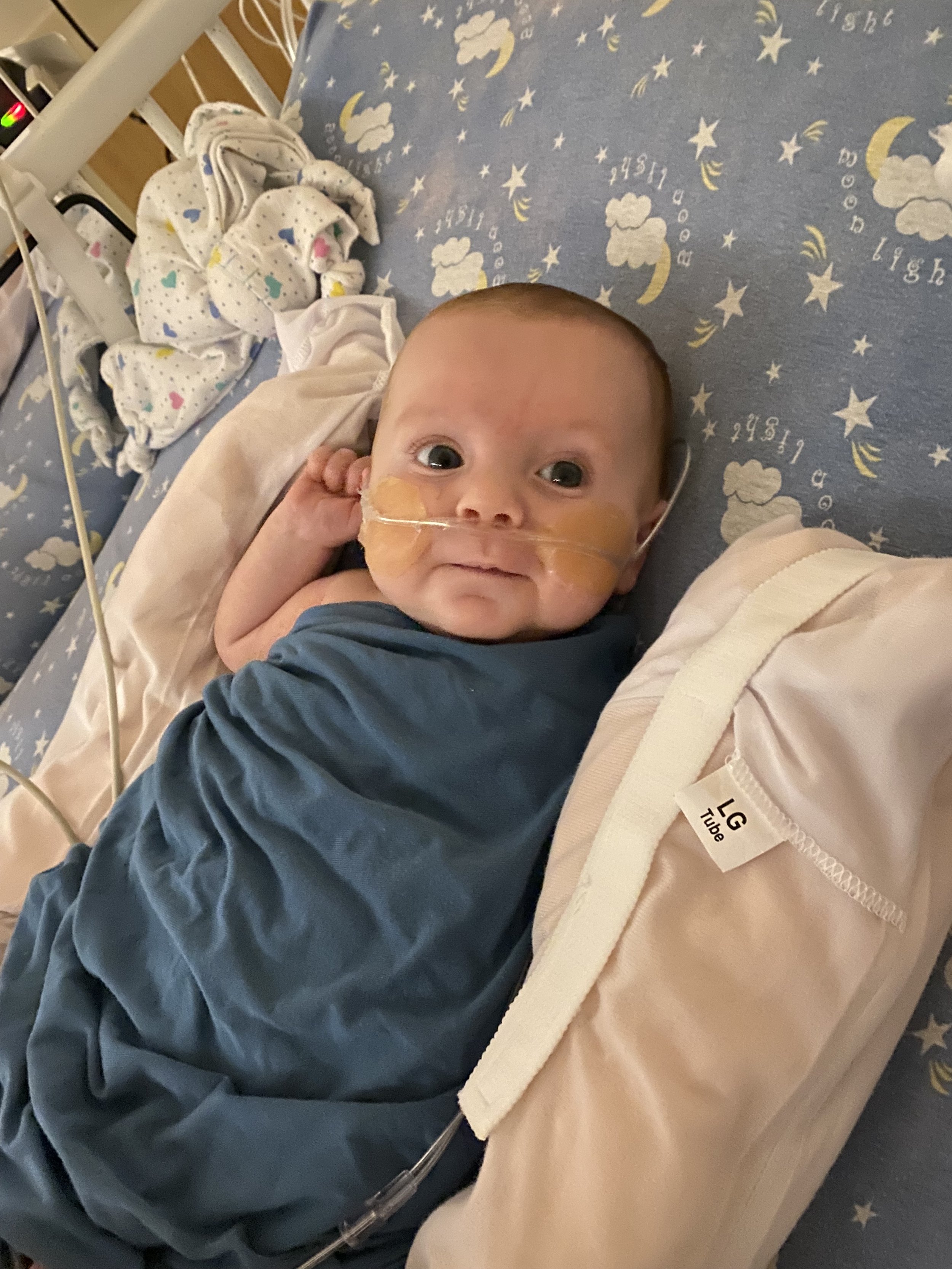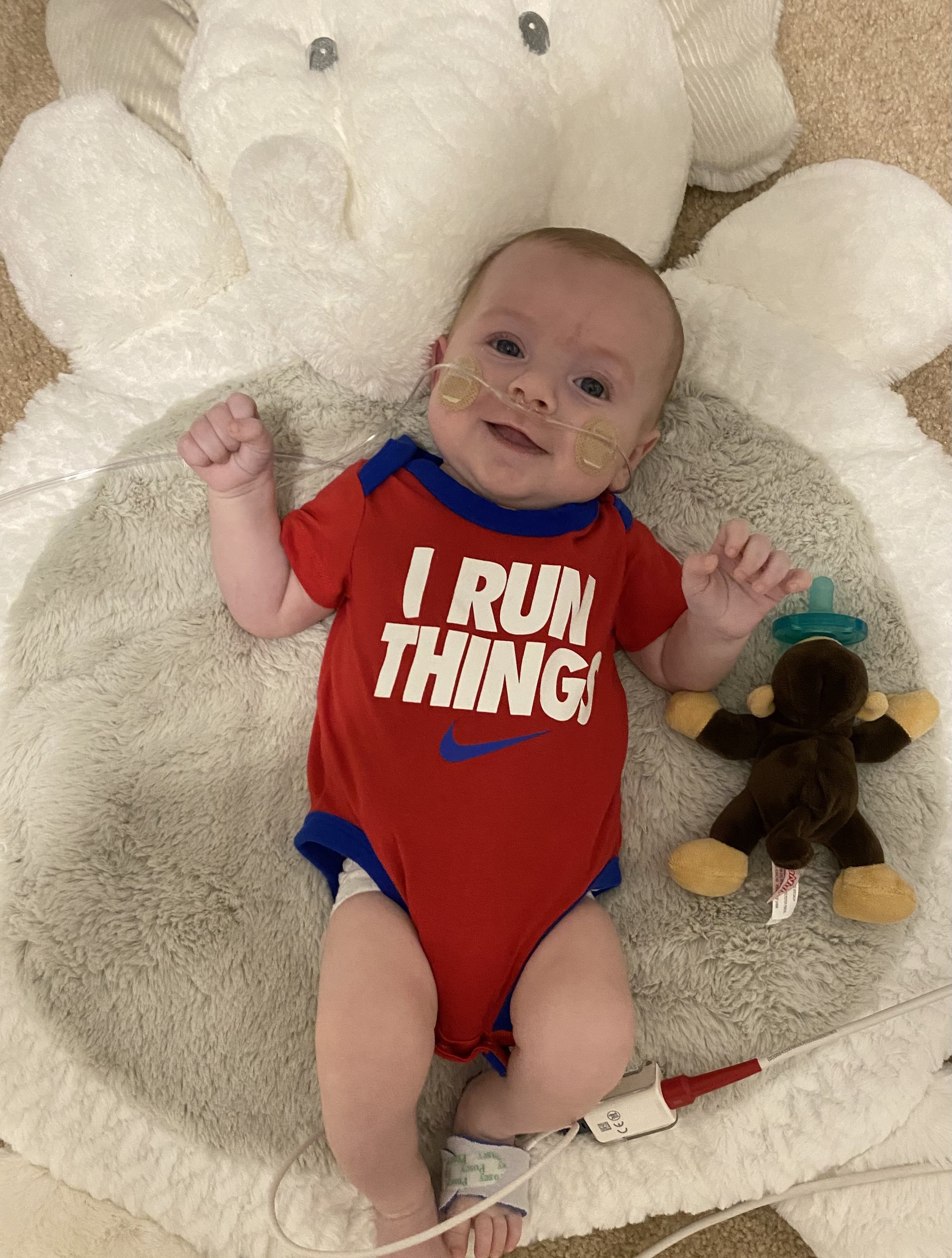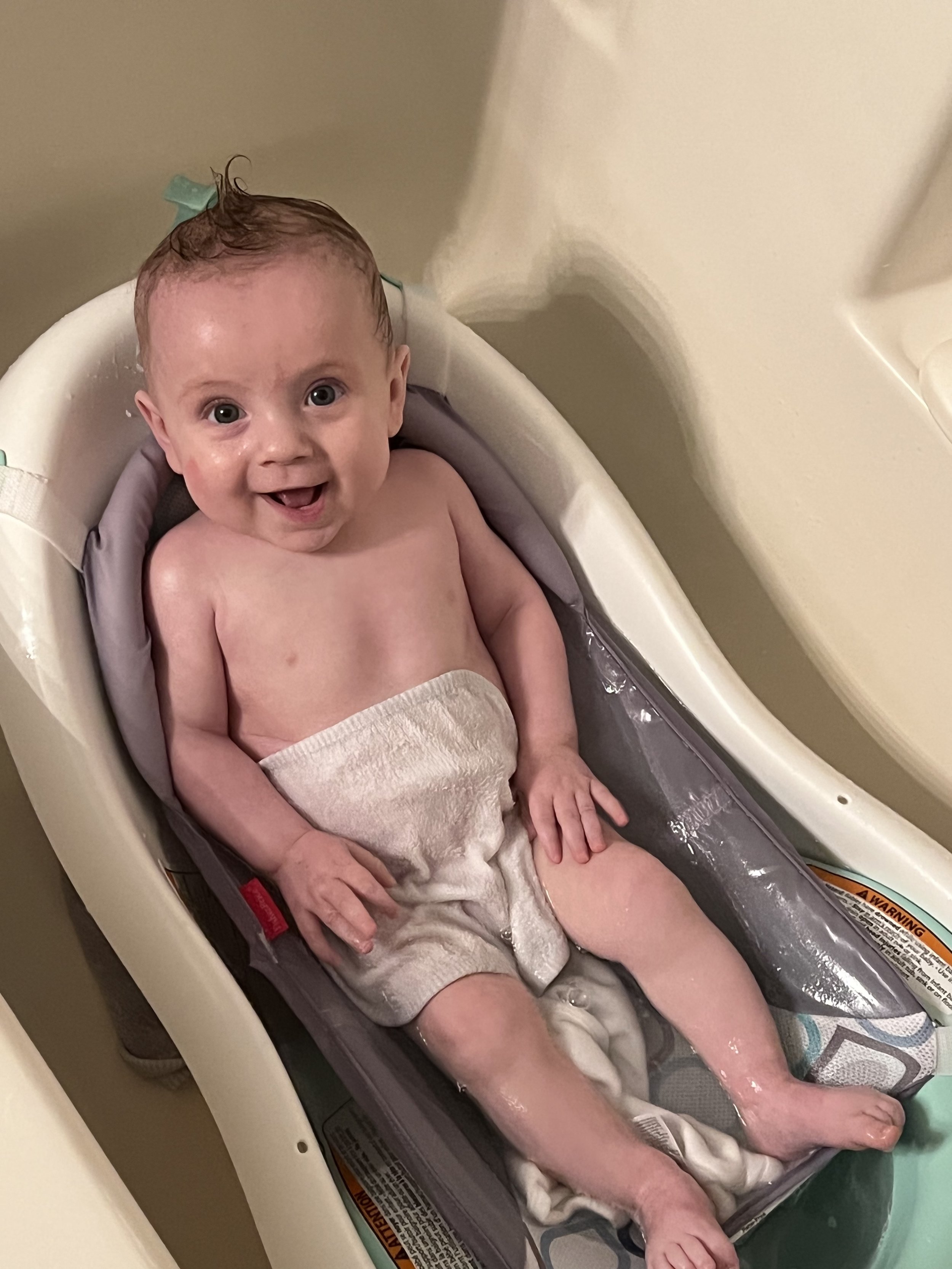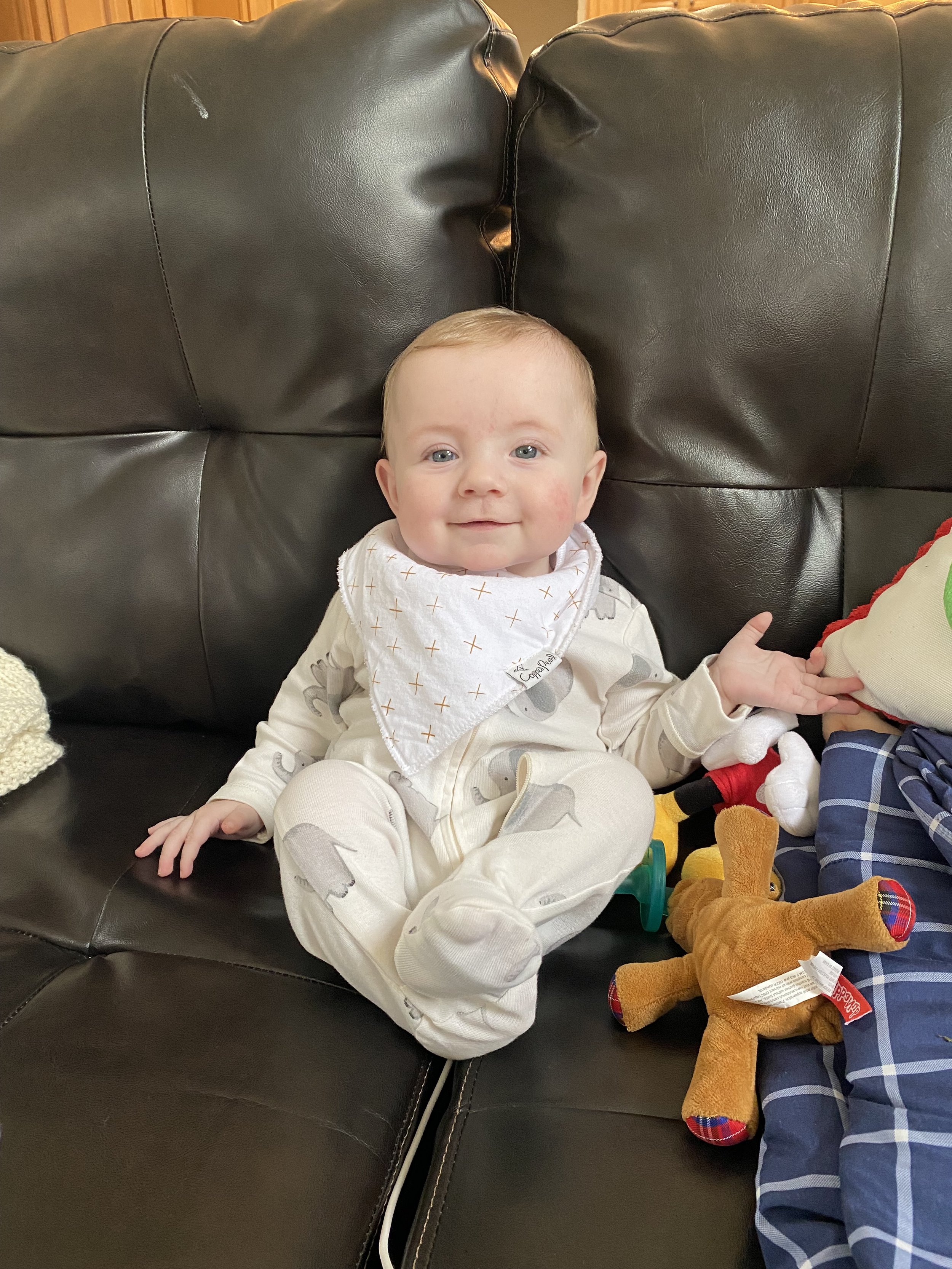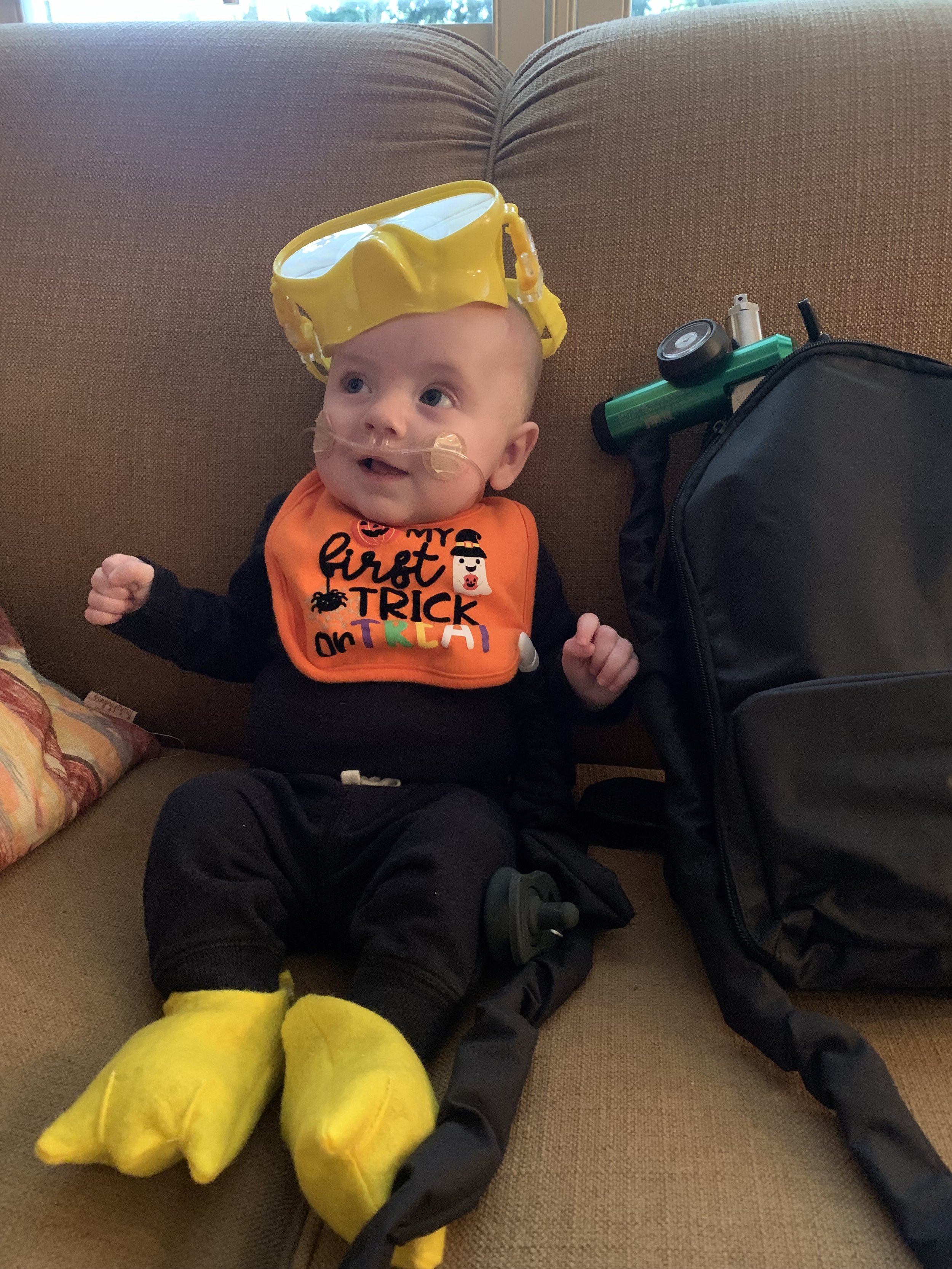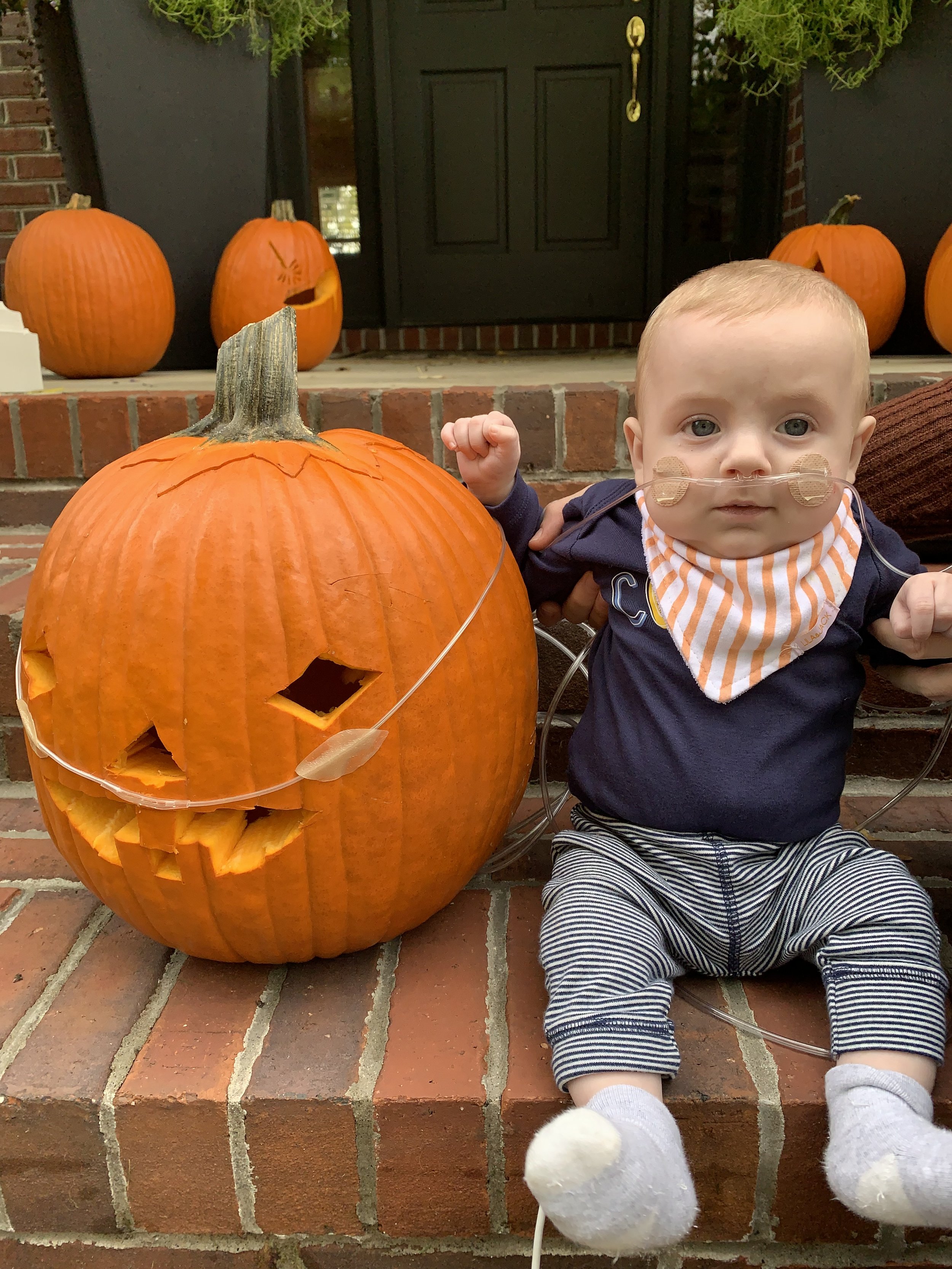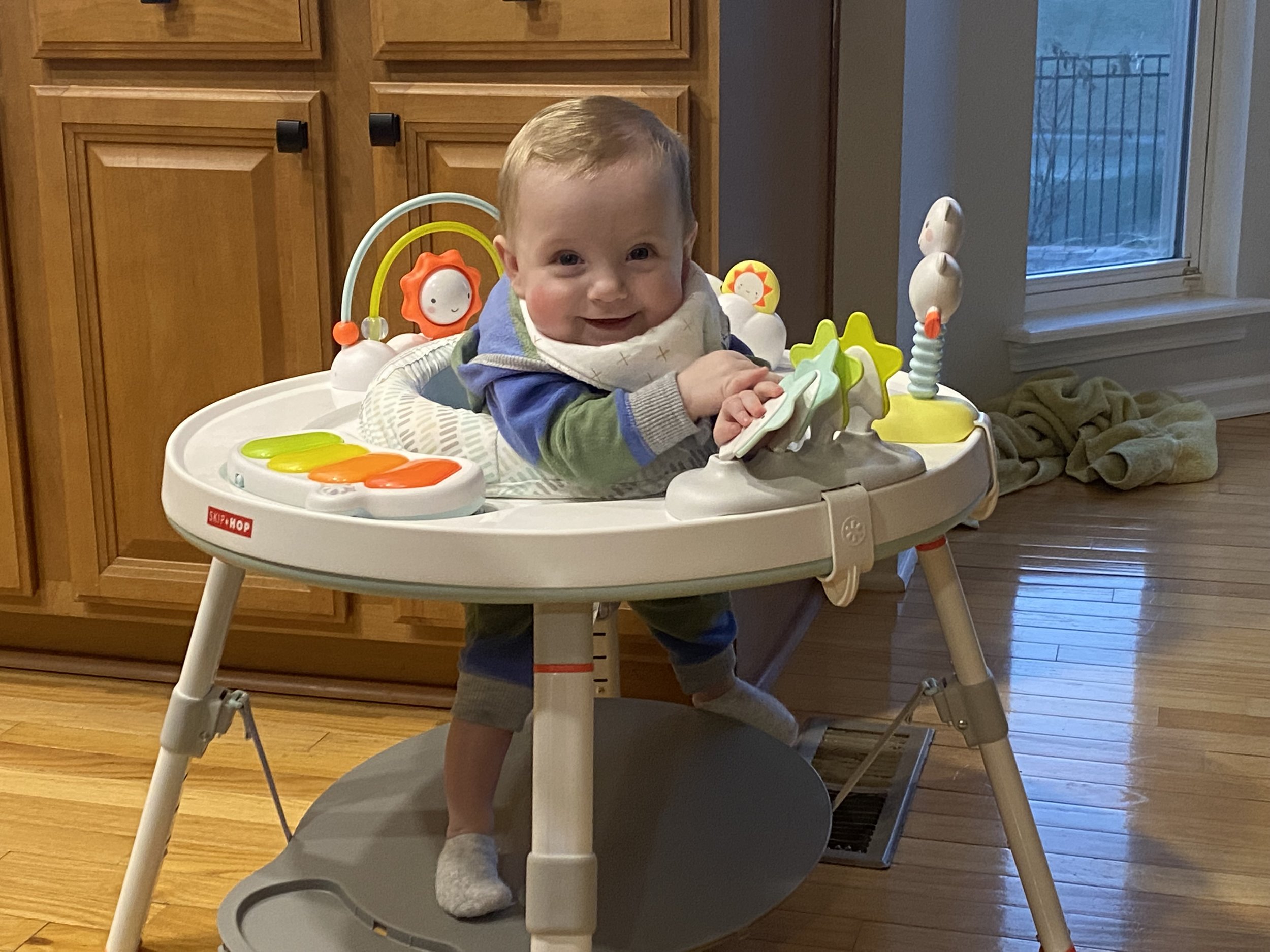Trey’s Story - Congenital Diaphragmatic Hernia
March 17, 2021, was a day we will never forget. It was a 24-week appointment that was going to include an ultrasound because Trey had his hands in a fist at his 20-week ultrasound. They wanted to take a better look to make sure they could see all of his fingers. Little did I know that it would be the beginning of dozens of ultrasounds to come. Once it was completed, my doctor came in and informed me that all of his fingers were there. The following words that came out of her mouth will always stick with me despite the feeling of complete blackout at the moment. “You might have noticed the ultrasound tech taking a lot of pictures of his chest cavity. There is fluid in his chest cavity, and it appears to be pushing his heart over. We think you need to be referred to Maternal-Fetal Medicine for further evaluation. We are concerned.”
We were devastated and absolutely terrified. The next day was nearly impossible. We were waiting to hear from the MFM but called them around lunchtime because we couldn’t wait any longer. They told us we would hear from them the following week. We were relieved that it didn’t seem like an emergency. The next day, I received a phone call from the office asking if we could come in at 1:15 pm that same day. I panicked. It must be an emergency.
At our appointment, the doctor showed us a scan of Trey’s chest cavity. He pointed to the heart and lungs and another large spot. He told us that the large spot was the liver and that it was not supposed to be there. He continued and told us that our baby boy had a right-sided Congenital Diaphragmatic Hernia (CDH), which was less common than left-sided. He had a 30-50% chance of survival rate. We were told to expect a large team of specialists to take him away immediately after delivery. The fluid we thought we had been sent there for wasn’t as concerning as the other findings and would be something they monitored. We were advised to do genetic testing to rule out Trisomy 13, 18, or 21.
The next few days were tough. We were flooded with support and words of encouragement. These are some of the words that really stuck with us, and we hope can reach a newly diagnosed mother or father:
God chose you to be his mom for a reason.
If he is anything like his dad, he is going to be a fighter.
Every child has a story, and it is our job to help them tell it.
We initially were going to continue our care with St. Vincent Hospital in Indianapolis and plan to deliver Trey at Peyton Manning Children’s Hospital. We decided to get a second opinion at Cincinnati Children’s Hospitals after many prayers and conversations. When we went for the MRI at Cincinnati, the results showed that he was in the very severe category and now qualified for the FETO procedure.
This meant re-location, leaving our home, financial burdens, bed rest, and the list went on. We ultimately decided that Cincinnati Children’s Hospital was where we needed to go for Trey’s severe case and the FETO procedure was the next step. On Wednesday, April 21, I said goodbye to my students, and we packed up our things and said goodbye to our home that we had moved into a month prior. The hardest part was wondering if when we came home, would our son be with us or not. We headed to Cincinnati, and there began our next journey.
Trey was born on June 18, 2021, weighing 6 lbs 13 oz by C-section. He made it to 37 weeks and 5 days. We had seen good results from the FETO procedure and were reassured that it would help him in the long run. We heard a little cry from him, and he was immediately whisked away to be intubated. After a few hours, we were able to go over to the NICU to see him. That was surreal. We don’t think we could have prepared ourselves for the number of machines supporting his little body. I felt like touching him would hurt him. Trey was stable for the first 24 hours, but his little body started telling us that he needed more support the following evening. On June 19, Trey was put on ECMO at 8:04 pm, before it became an emergency. Trey showed us right away that he was ready to fight. He made great strides while on ECMO and was able to have his repair surgery the following Saturday. He came off ECMO after his first clamp trial on July 7 while remaining on the ventilator. I was able to hold him the very next day. With the help of 5 amazing nurses, he was gently moved onto a very nervous and emotional mama. Dad was able to hold him a few days later, and it became the norm for us to get to hold him when we were there.
He started feeding through the NG tube on July 11 and was able to be extubated on July 24 to high flow oxygen. One of Trey’s biggest challenges was his tachypnea, breathing at a really fast rate. This affected his ability to be weaned from the oxygen as quickly as we would have liked and his ability to begin oral feedings. After a little while, it was determined that he was just going to be tachypneic for a while, and he just needed some time to continue to grow and develop. That was hard for parents to hear because we felt like it was a race against the clock to get him home.
Sure enough, Trey proved to us that he just needed time. 19 days later, Trey was weaned from the high flow oxygen to wall oxygen! On August 24, day 67, he was able to try his first bottle. Over the course of the next few weeks, we worked closely with OT and Speech to increase his interest in bottle feeding. Trey was not very interested in it at all. We decided to have a G-tube placed to allow us to get him home sooner and work on the feeding. This was a hard decision but one of the best decisions we made. Over the next few weeks, we did a few room air trials to see if we could say goodbye to the oxygen; however, Trey wasn’t quite ready. The decision was made that we could be discharged after his B-tube surgery and with .5 L of oxygen. On September 9, after 83 long and exhausting days, we took our sweet boy home! We left our “home” in Newport, Kentucky, and went back to Fishers, Indiana, after 5 months.
Trey is absolutely thriving! He was able to wean from the oxygen completely in January after 4 months of being home. He is still 100% G-tube fed but is beginning to show more and more interest in purees and food. We work closely with our Speech, OT, and PT to ensure he is meeting all of his developmental milestones.
Trey truly had a story to tell, and it was our job to help him tell it. This is only the beginning.

